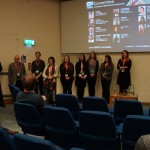Articles
RSS for ArticlesThe Bare Earth
Lidar Exposes Geology The Washington Geological Survey, within the State Department of Natural Resources Survey have created a stunning Esri Story Map to present the work they have done with Lidar For geologists, Lidar is an invaluable tool that enables them to see and study large areas of the earth’s surface, particularly in places where… Read more
Fast and easy integration and classification of hyperspectral optical and thermal data
Optical and thermal hyperspectral data, when used together, allow different varieties of minerals to be mapped. Considering the main mineralogical groups, the visible (VIS, 0.4–0.7 µm) and near-infrared (NIR, 0.7–1.0 µm) parts of the electromagnetic spectrum allow for mapping surfaces with a high concentration of Fe3+-bearing minerals (e.g., hematite, goethite and jarosite) and shortwave infrared… Read more
Remote Sensing of Hydrocarbon Microseepage
Remote sensing can help professionals in the oil and gas industry discover new areas for exploration. One such application is identifying areas of hydrocarbon microseepage. Microseeps are invisible traces of light hydrocarbons (primarily C1 – C5 substances) that seep to the surface from an oil or gas reservoir. When hydrocarbons migrate upward and reach exposed… Read more
Thermal infrared multispectral remote sensing of lithology and mineralogy based on spectral properties of materials
For many years, much research has been undertaken using spaceborne thermal systems for lithological and mineralogical mapping. Works of Ninomiya and Fu amongst others are well known as benchmarks for a number of the spectral indices that we use today, in particular with their application to ASTER data and more recently also to GaoFen-5 a… Read more





